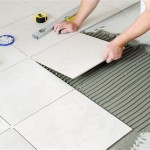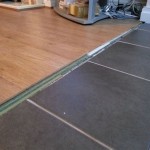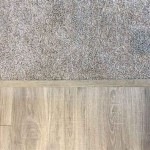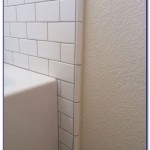Can You Put Tile Over Concrete Slab?
Installing tile directly over a concrete slab is a common and often cost-effective method of flooring. However, it's crucial to understand the factors that contribute to a successful tile installation and avoid potential issues down the line. This article outlines the key considerations and steps involved in placing tile over a concrete slab, ensuring a durable and visually appealing outcome.
Assessing the Concrete Slab
The success of tile installation over concrete hinges on the condition of the slab itself. Before starting, a thorough assessment is necessary to determine if the slab meets the required standards. Here's what to look for:
Levelness:
A level slab is essential for tile installation. Unevenness can lead to uneven tile placement, creating a visually unappealing and potentially unstable floor. Use a level to check the slab's flatness. Minor imperfections can be corrected with self-leveling compound.Moisture:
Concrete slabs can retain moisture, which can lead to tile problems like cracking, delamination, and mold growth. Measure the moisture content of the slab using a moisture meter. The acceptable moisture levels depend on the type of tile and adhesive being used. Consult manufacturer recommendations for specific guidelines.Cracks and Damage:
Examine the slab for any cracks, chips, or other damage. Significant cracks might require repair before tile installation. Fill smaller cracks with a suitable patching compound.Cleanliness:
The slab needs to be clean and free of debris, dirt, grease, and other contaminants. Sweep, vacuum, and clean the surface thoroughly with a suitable detergent.
Preparing the Concrete Slab
Once the slab has been assessed, it's crucial to prepare it for tile installation. This involves addressing any identified issues and creating a suitable base for the tile adhesive:
Leveling:
Use a self-leveling compound to address minor imperfections and achieve a consistently level surface. Ensure the compound has cured completely before proceeding.Moisture Barrier:
If the slab exhibits high moisture content, a vapor barrier is necessary to prevent moisture from damaging the tile. A 6 mil polyethylene sheet can be used, ensuring it's fully adhered to the slab and overlaps seams appropriately.Primer:
Applying a primer to the concrete surface enhances adhesion between the tile adhesive and the slab. Choose a primer specifically designed for concrete and allow it to dry completely before moving to the next step.
Installing Tile Over Concrete
The actual tile installation process requires meticulous planning and execution. Follow these steps to ensure a successful outcome:
Planning the Layout:
Plan the tile layout carefully, considering the room's size and shape. Mark the starting point and use a tile spacing tool to maintain consistent grout lines.Applying Adhesive:
Apply the appropriate tile adhesive to the slab, using a notched trowel to create even ridges for tile bonding. Follow the manufacturer's instructions for adhesive thickness and application technique.Placing Tile:
Place the tile onto the adhesive, pressing firmly to ensure good contact. Use a tile spacer to maintain consistent grout lines. Make sure the tile is level and properly aligned.Grouting:
Once the adhesive has fully cured, apply grout to the spaces between the tiles. Use a grout float to distribute the grout evenly and remove excess. Allow the grout to set according to the manufacturer's instructions.Sealing:
For added protection and stain resistance, seal the grout after it has cured. This will create a barrier against water, dirt, and other contaminants.
Tile installation over concrete can be a challenging but rewarding project. By carefully considering the factors outlined above and following proper procedures, you can ensure a durable and aesthetically pleasing finished product.
Additional Tips for Success
Choose the Right Tile:
Different tiles have varying resistance to moisture and movement. Consult with a professional to select the appropriate tile for your specific needs.Consider a Professional:
If you're unsure about any steps, it's best to consult with a professional tile installer. They can provide expert guidance and ensure a proper installation.Follow Manufacturer Instructions:
Always adhere to the manufacturer's instructions for tile, adhesive, grout, and other materials used in the project.

Tiling Over A Ed Concrete Slab Fine Homebuilding
:max_bytes(150000):strip_icc()/can-you-install-tile-directly-on-concrete-1822600-04-458f7bb6c78348c1835cf8054ef36553.jpg?strip=all)
How To Install Tile Over Concrete
How To Tile Onto Concrete Floors Porcelain Super

Sound Dampening Ceramic Tile Over A Concrete Floor Fine Homebuilding
:max_bytes(150000):strip_icc()/can-you-install-tile-directly-on-concrete-1822600-01-8a89ceab1a274fb8ac81890ab7fc6b1b.jpg?strip=all)
How To Install Tile Over Concrete

Concrete Patio Transformation 7 Steps To Diy A New Outdoor Oasis

Covering Concrete Slab Installation Dektektile Luxury Tile Decking Material

How To Install Ceramic Tiles On Concrete Floor Tile Installation
How To Lay Floor Tiles On Concrete Stonesuper

Concrete Patio Transformation 7 Steps To Diy A New Outdoor Oasis
Related Posts








